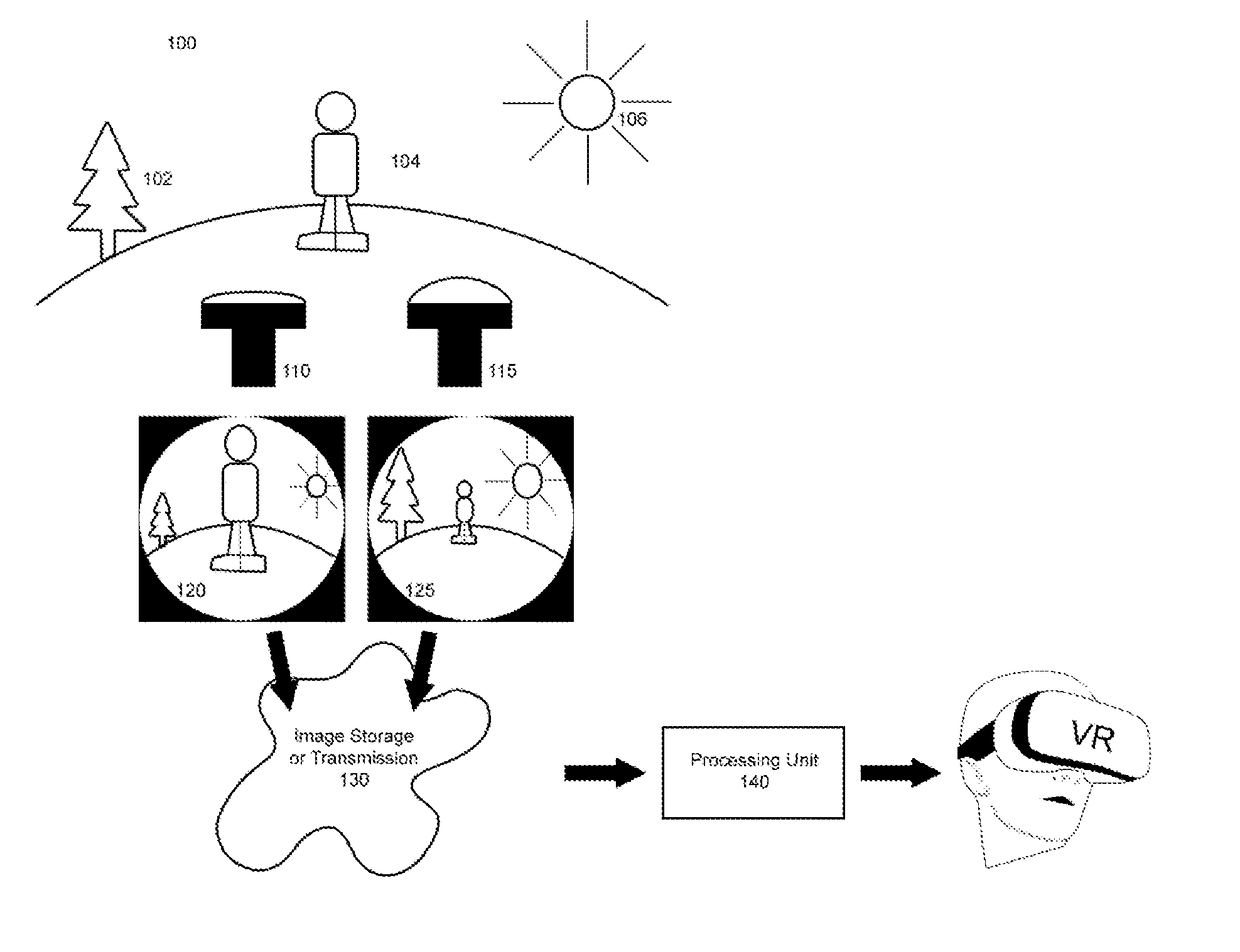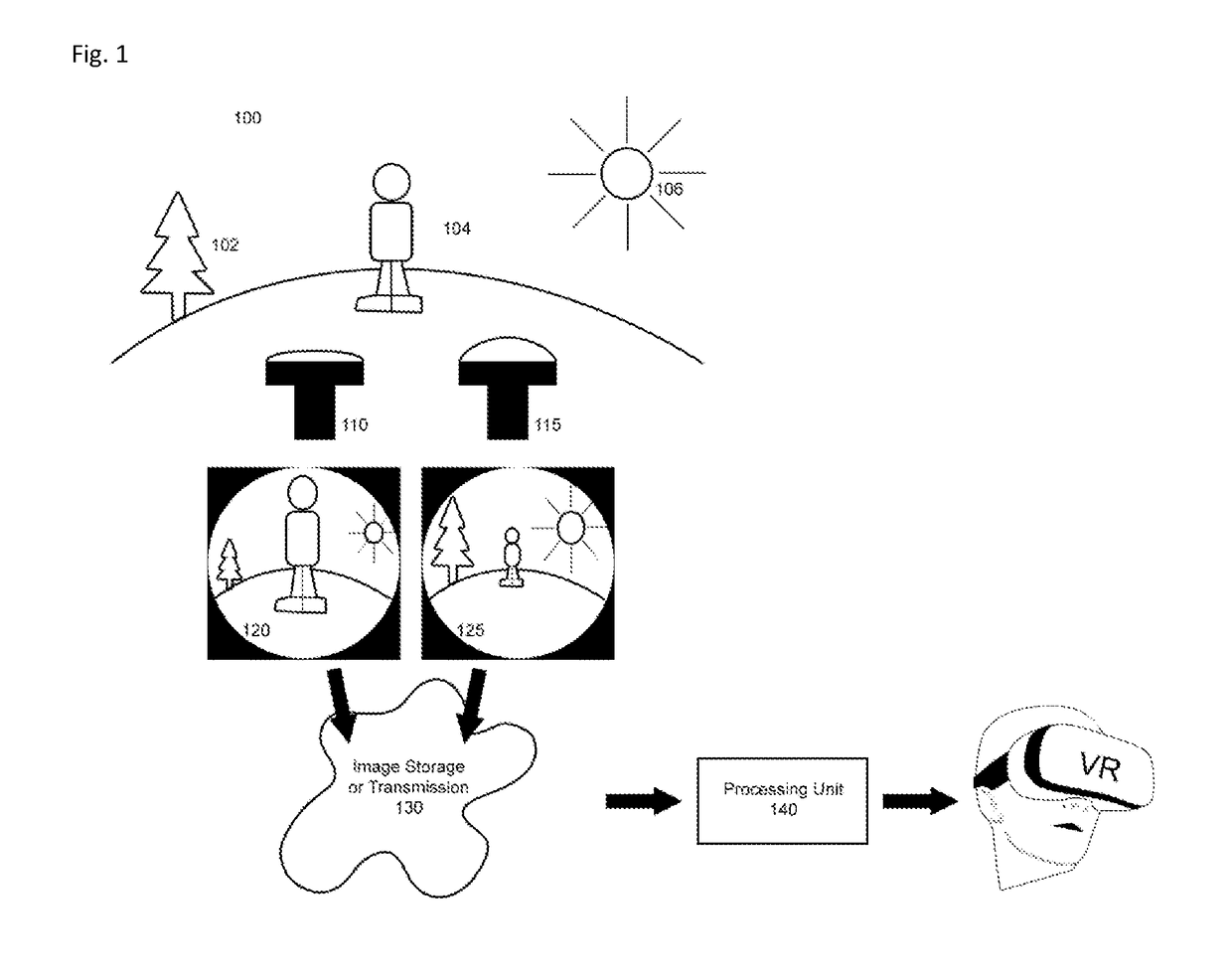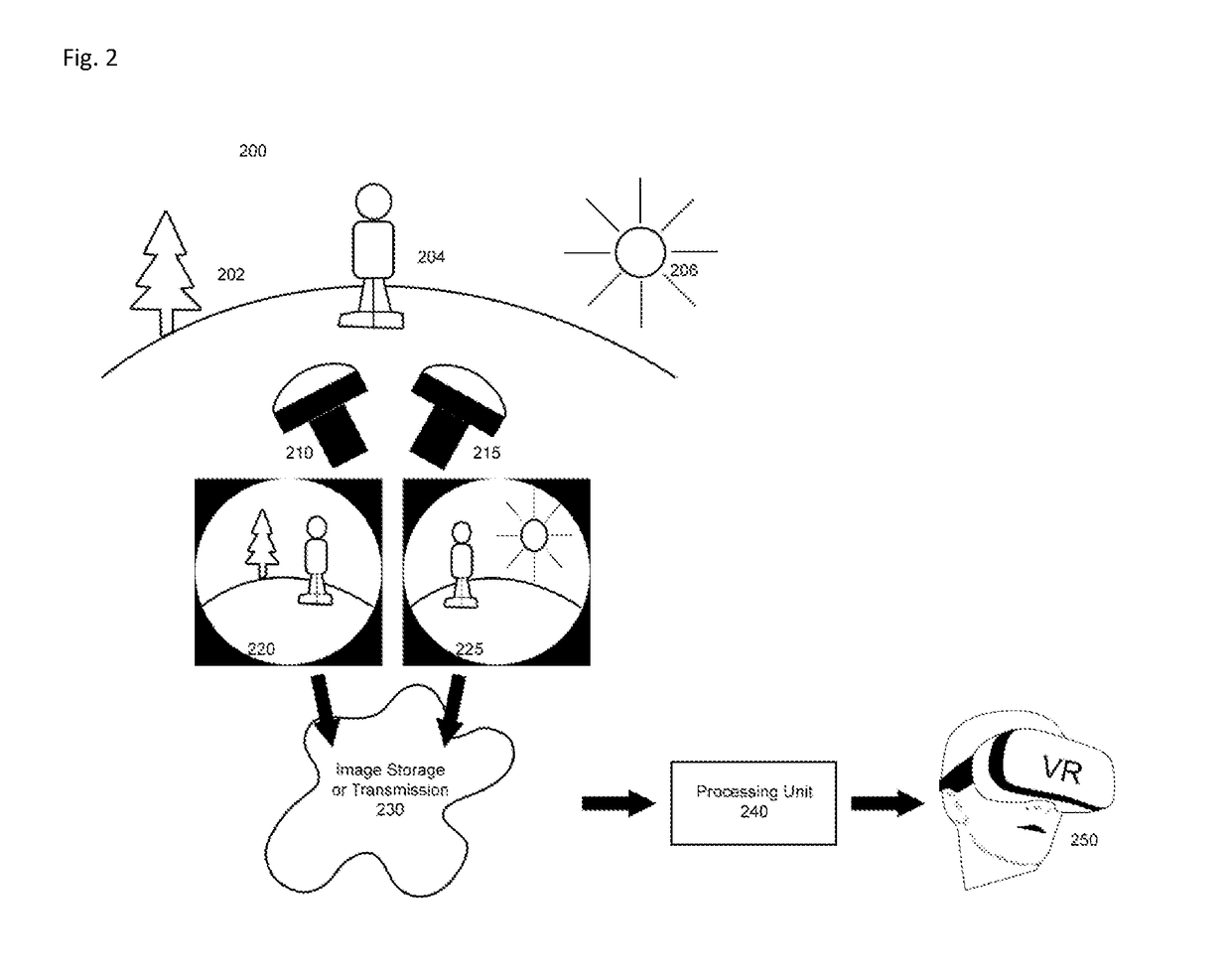Wide-angle stereoscopic vision with cameras having different parameters
- Summary
- Abstract
- Description
- Claims
- Application Information
AI Technical Summary
Benefits of technology
Problems solved by technology
Method used
Image
Examples
Embodiment Construction
[0031]The words “a” and “an”, as used in the claims and in the corresponding portions of the specification, mean “at least one.”
[0032]FIG. 1 shows an embodiment according to the present invention where the difference between the at least two cameras is the distortion profile of the lenses. In some embodiments of the present invention, the difference of distortion profile between the at least two cameras is such that the output resolution from the cameras has a difference of at least 10% in angular resolution for at least one angular field. This angular field is represented by an object far away in the scene such that it is imaged by both cameras at the same angular position relative to their optical axis. The at least 10% angular resolution difference can be measured in pixels / degree in the output image, in micrometers / degree in the image plane or by any other similar unit of measurement where a ratio of a distance on the image plane by a unit of an angular displacement in the objec...
PUM
 Login to View More
Login to View More Abstract
Description
Claims
Application Information
 Login to View More
Login to View More - Generate Ideas
- Intellectual Property
- Life Sciences
- Materials
- Tech Scout
- Unparalleled Data Quality
- Higher Quality Content
- 60% Fewer Hallucinations
Browse by: Latest US Patents, China's latest patents, Technical Efficacy Thesaurus, Application Domain, Technology Topic, Popular Technical Reports.
© 2025 PatSnap. All rights reserved.Legal|Privacy policy|Modern Slavery Act Transparency Statement|Sitemap|About US| Contact US: help@patsnap.com



